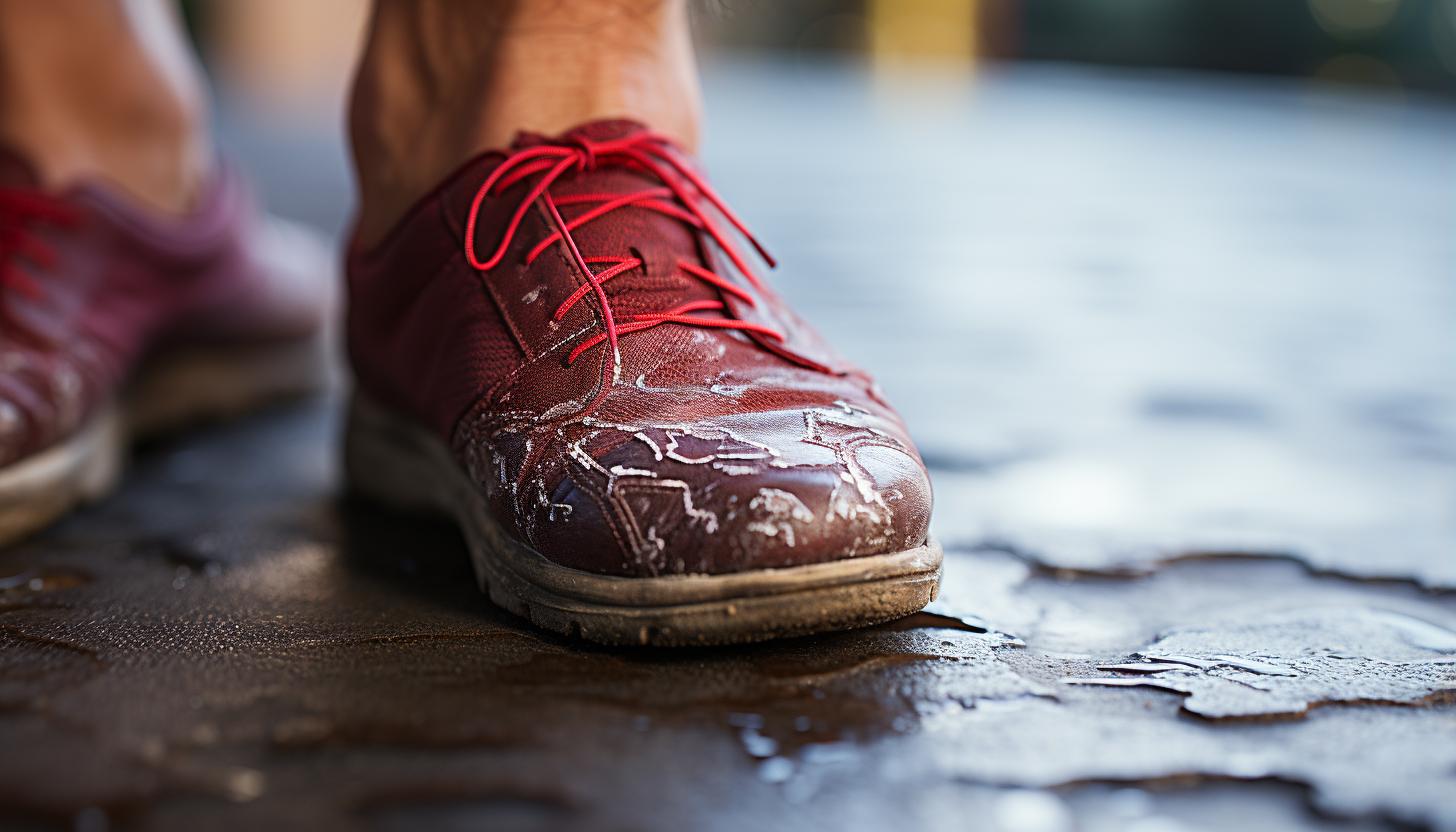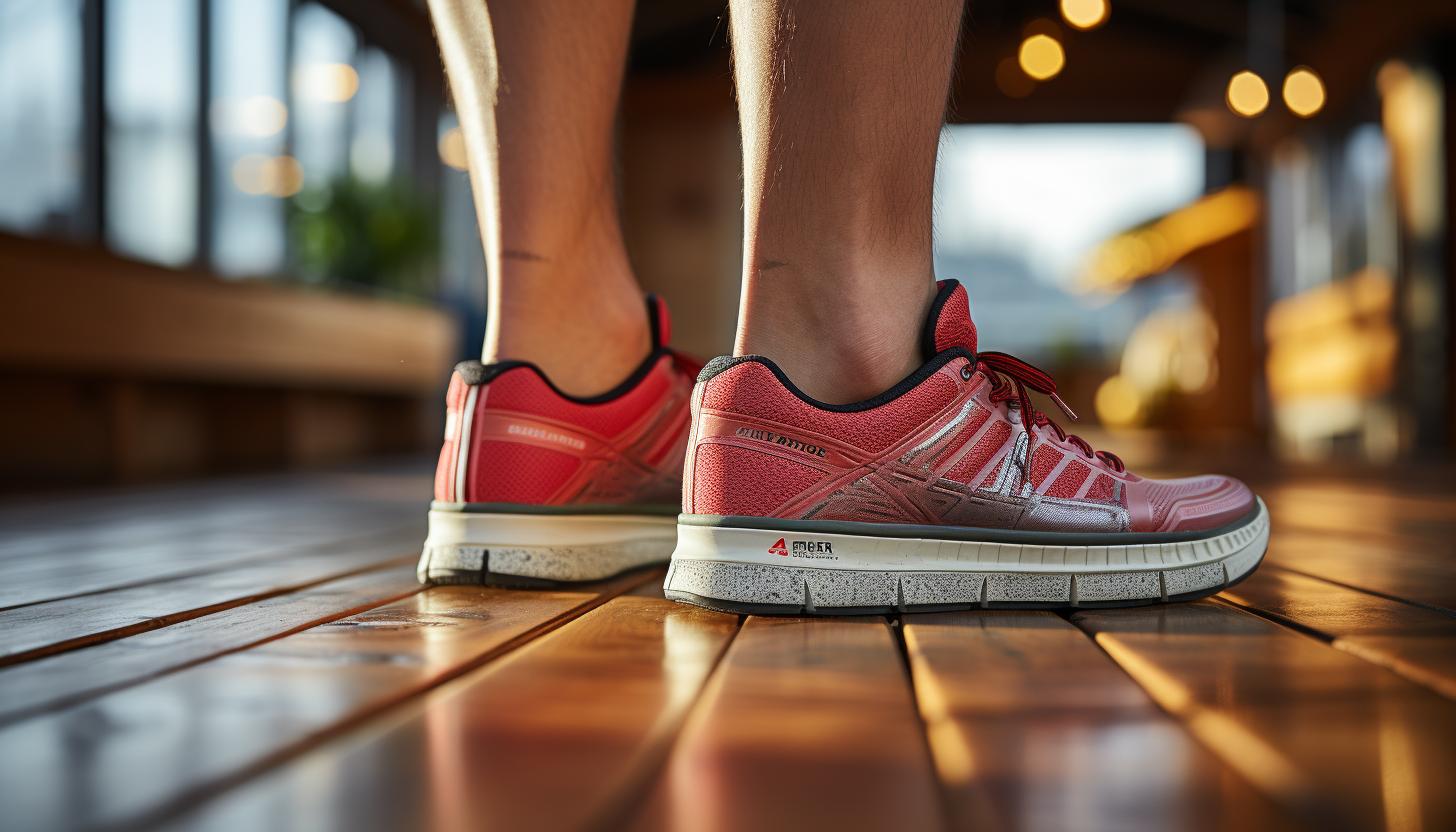Rehabilitation Exercises for Achilles Tendonitis Recovery

Are you suffering from Achilles tendonitis and looking for effective rehabilitation exercises to speed up your recovery? Look no further!
In this article, we will guide you through a series of expert-recommended exercises that will help alleviate pain, improve flexibility, and strengthen your Achilles tendon.
By following these exercises diligently, you can regain your mobility and get back on track to an active lifestyle.
So let’s get started on your journey to recovery!
Causes of Achilles Tendonitis

One of the most common causes of Achilles tendonitis is repetitive strain on the tendon. The Achilles tendon, which connects the calf muscles to the heel bone, can become inflamed and painful when subjected to excessive or repetitive stress. This condition often occurs in athletes who engage in activities that involve running and jumping, such as basketball or tennis. Other causes include sudden increases in activity level, improper footwear, and poor biomechanics.
Certain risk factors can increase your likelihood of developing Achilles tendonitis. These include age (as it is more common in individuals over 30), being male, having flat feet or high arches, obesity, and participating in certain sports or activities without proper conditioning or warm-up exercises.
Prevention measures can help reduce your risk of developing Achilles tendonitis. It is important to wear appropriate shoes for your sport or activity that provide proper support and cushioning for your feet. Gradually increasing your activity level and incorporating stretching exercises into your routine can also help prevent this condition.
Understanding the causes of Achilles tendonitis and addressing any potential risk factors through prevention measures can significantly reduce your chances of experiencing this painful condition. By taking steps to protect your Achilles tendon, you can maintain a healthy and active lifestyle.
Transition: Now that you are aware of the causes and prevention measures for Achilles tendonitis, let’s explore its symptoms and how it is diagnosed.
Symptoms and Diagnosis

Diagnosing symptoms of Achilles tendonitis often involves a physical examination and medical history review. The healthcare provider will assess your range of motion, strength, and flexibility in the affected ankle. They may also ask about any previous injuries or activities that could have contributed to the development of Achilles tendonitis. In some cases, imaging tests such as an ultrasound or MRI may be ordered to confirm the diagnosis.
The table below summarizes common symptoms of Achilles tendonitis and possible treatment options:
| Symptoms | Treatment Options |
|---|---|
| Pain and stiffness | Rest, ice, compression |
| Swelling | Nonsteroidal anti-inflammatory drugs (NSAIDs) |
| Tenderness | Physical therapy |
| Difficulty walking | Orthotic devices |
It is important to seek treatment for Achilles tendonitis promptly to prevent long-term effects. Delayed or inadequate treatment can lead to chronic pain, reduced mobility, and even rupture of the Achilles tendon. Early intervention with appropriate exercises and therapies can help alleviate symptoms and promote healing.
Transitioning into the next section on precautions and safety measures, it is essential to understand how to prevent further injury while recovering from Achilles tendonitis.
Precautions and Safety Measures

To prevent further injury while healing, it’s important for you to take precautions and follow safety measures. Here are some key points to keep in mind:
– Wear Proper Footwear: Invest in shoes that provide adequate support and cushioning for your feet. Look for shoes with a low heel-to-toe drop and good arch support. Avoid high heels or shoes with minimal cushioning, as they can aggravate your Achilles tendonitis.
– Gradual Progression: When engaging in rehabilitation exercises, start slowly and gradually increase the intensity and duration over time. Pushing yourself too hard too soon can worsen your condition or lead to additional injuries. Listen to your body’s signals and adjust accordingly.
– Use Proper Technique: Ensure you are using the correct form during exercises to avoid putting unnecessary strain on your Achilles tendon. If you’re unsure about proper technique, consult with a physical therapist or athletic trainer who can guide you.
– Warm Up and Cool Down: Before starting any exercise routine, warm up your muscles with gentle stretches or light cardio activities like brisk walking. Similarly, after completing your exercises, cool down by stretching again to help prevent muscle stiffness and reduce the risk of injury.
By following these precautions and safety measures, you can maximize the effectiveness of your rehabilitation program while minimizing the risk of further injury.
Remember that patience is key during this recovery process – listen to your body and give it the time it needs to heal properly.
Rehabilitation Exercises for Achilles Tendonitis

Remember, it’s essential to gradually increase the intensity and duration of your exercises while rehabilitating from Achilles tendonitis. Strengthening exercises and stretching routines are key components of your rehabilitation program. These exercises help to improve the strength and flexibility of the muscles and tendons in your lower leg, reducing the risk of further injury.
To help you incorporate these exercises into your routine, here is a sample table outlining three different strengthening exercises and three stretching routines for Achilles tendonitis:
| Strengthening Exercises | Stretching Routines |
| Calf Raises: Stand on a step with your heels hanging off the edge. Raise up onto your tiptoes, then slowly lower back down. Repeat 10-15 times. | |
| Eccentric Heel Drops: Stand on a raised surface with only the balls of your feet touching. Slowly lower the heel of one foot towards the ground until you feel a stretch in your calf muscle, then raise back up using both legs. | |
| Towel Scrunches: Place a small towel flat on the floor in front of you. Use only your toes to scrunch up the towel towards you, then release it back down. |
Remember to consult with a healthcare professional before starting any exercise program, especially if you have been diagnosed with Achilles tendonitis. They can provide personalized guidance and ensure that these exercises are appropriate for your specific condition and stage of recovery.
Tips for Speeding Up Recovery

If you’re looking to speed up your healing process, it’s important to follow a comprehensive treatment plan that includes rest, proper nutrition, and consistent physical therapy.
Here are some tips to help you expedite your recovery from Achilles tendonitis:
– Listen to your body: Pay attention to any pain or discomfort during activity and modify accordingly. Pushing through the pain can worsen the injury and delay healing.
– Follow the prescribed timeline: Understand that recovery from Achilles tendonitis can take time. Stick to your doctor’s recommended timeline for returning to activities or sports.
– Use home remedies: Incorporate home remedies such as applying ice packs, using compression wraps, and elevating your leg whenever possible. These can help reduce inflammation and promote healing.
– Engage in cross-training: While resting is crucial for recovery, staying active in a safe manner can aid in maintaining overall fitness levels. Consider low-impact exercises like swimming or cycling that don’t put excessive strain on the Achilles tendon.
Remember that each person’s recovery timeline may vary depending on the severity of their injury and individual factors. It’s essential to consult with a healthcare professional for personalized advice and guidance throughout your rehabilitation journey.
Conclusion
In conclusion, you now have a clear understanding of the causes and symptoms of Achilles tendonitis.
By following the recommended rehabilitation exercises and taking necessary precautions, you can speed up your recovery process.
Remember to listen to your body and consult with a healthcare professional if needed.
With dedication and consistency, you’ll be back on your feet in no time.
So go ahead, conquer that Achilles tendonitis like a pro!






